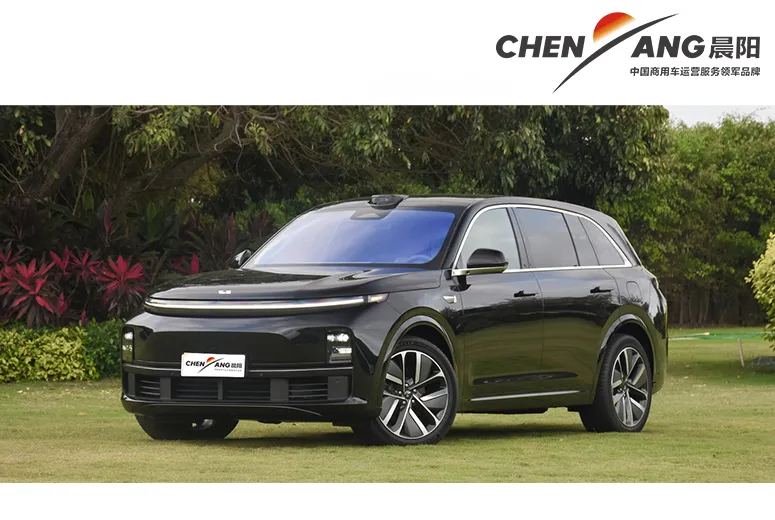The Economics of Electric Cars: When Will EVs Be Cheaper Than Gas Cars?
Electric vehicles (EVs) have been steadily gaining popularity due to their eco-friendly benefits and advancing technology. However, for many consumers, the primary barrier to purchasing an EV power vehicle has been the cost. With the prices of batteries dropping and governments offering incentives for green energy, the question arises: when will electric cars become cheaper than gasoline-powered cars? This article analyzes the current cost trends and explores the potential timeline for new energy-electric cars to surpass traditional vehicles in affordability.

How EV Power Solutions are Driving Down Costs
One of the most significant factors in the cost of electric vehicles is the battery. Batteries account for around 30-40% of the total cost of an EV power car, but as technology improves, battery prices are rapidly declining. EV power solutions have made significant progress, with innovations like solid-state batteries, more efficient lithium-ion cells, and better-charging infrastructure. These improvements not only enhance the performance and range of new energy-electric cars but also contribute to reducing overall production costs.
Battery prices have fallen dramatically over the past decade, from around $1,100 per kilowatt-hour in 2010 to below $150 per kilowatt-hour today. Many experts believe that when battery prices fall to around $100 per kilowatt-hour, electric cars will reach price parity with gas-powered vehicles without subsidies. This milestone is expected within the next few years, making new energy-electric cars more affordable for the average consumer.
Government Incentives for New Energy Electric Cars
Government policies and incentives play a crucial role in the economics of new energy cars. Many countries are offering tax credits, rebates, and subsidies for purchasing electric vehicles. These incentives significantly lower the upfront cost of EVs, helping to make them competitive with traditional vehicles. Additionally, many regions are implementing stricter emissions regulations, making gasoline-powered cars more expensive to own and operate. As these regulations tighten, the total cost of ownership for new energy electric cars will continue to decrease.
In countries like China, which leads the world in EV production, government incentives have spurred the development and adoption of new Chinese EV models. This has accelerated the shift toward electric vehicles and contributed to lower costs as manufacturers scale up production. The Chinese government has also invested heavily in infrastructure, creating an ecosystem where new energy electric cars are more affordable and convenient to use.
Comparing Fuel and Maintenance Costs Between EVs and Gas Cars
When comparing the cost of new energy cars to traditional gas-powered cars, it's essential to consider not just the upfront purchase price but also the long-term savings. EV power vehicles have significantly lower fuel and maintenance costs compared to gas cars. Charging an EV is cheaper than filling up a gas tank, and with advances in EV power solutions, charging times are becoming shorter, adding to the convenience.
The Rise of New Chinese EV Models
China has become a powerhouse in the production of new Chinese EV models, which has had a global impact on the cost and availability of electric vehicles. Chinese automakers, such as BYD and Li Auto, have leveraged government support and economies of scale to produce new energy cars at competitive prices. These vehicles often come equipped with advanced EV power solutions at a fraction of the cost of their Western counterparts. As more new Chinese EV models enter the global market, the competition will drive down prices further, making electric cars more accessible to a broader audience.
The export of new Chinese EV models to Europe, North America, and other regions is also contributing to a more affordable EV market. With aggressive pricing strategies and increasing production efficiency, new Chinese EV manufacturers are playing a crucial role in the race to make electric vehicles cheaper than gas-powered cars.
When Will New Energy Electric Cars Be Cheaper Than Gas Cars?
The tipping point when new energy cars become cheaper than gasoline-powered vehicles is rapidly approaching. Experts predict that by the mid-2020s, the upfront purchase price of electric vehicles will match or even undercut that of gas cars, especially as battery technology continues to improve and production scales up. With the additional savings from lower fuel and maintenance costs, new energy-electric cars are expected to become the dominant choice for consumers within the next decade.
Advancements in EV power solutions, government incentives, and the rise of new Chinese EV models are all contributing to the decreasing cost of electric vehicles. As these trends continue, electric cars will soon surpass gasoline-powered vehicles in both affordability and overall value, ushering in a new era of sustainable transportation.
-
Low Maintenance + High Availability of Ownership for Mining Dump TruckNewsJul.17,2025
-
Drum Drive Axle + Air Suspension for Electric Tractor TruckNewsJul.17,2025
-
33m Boom + Full Hydraulic Outriggers: Narrow-Site Construction Practices of Mixer Pump TruckNewsJul.17,2025
-
18L Large Drum + Extended Drain Interval of Gear Oil for Heavy Duty TrucksNewsJul.17,2025
-
13m Cargo Space + Polyurethane Insulation: Long-Term Cold Chain Protection Solutions for Refrigerated Semi-Trailers for SaleNewsJul.17,2025
-
10T Water Tank + 2.5MPa Fire Pump Efficiency Analysis of Water Tank Fire TruckNewsJul.17,2025
Popular products

























